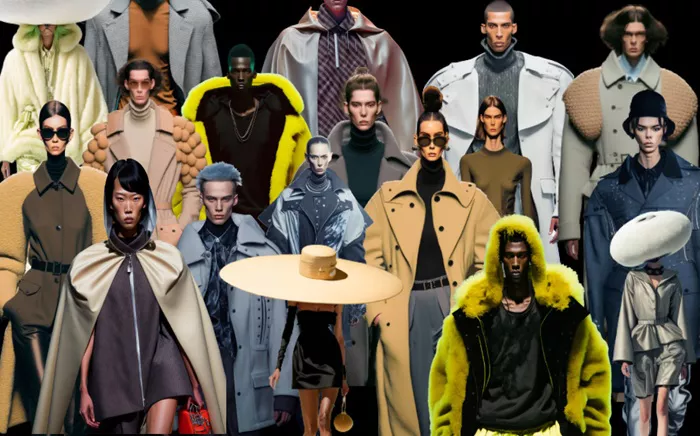Fashion Week is a global phenomenon that has become an integral part of the fashion industry. It is a time-honored tradition where designers showcase their latest collections, trends are set, and the fashion world converges. But have you ever wondered who created the fashion week? This article will delve into the history of Fashion Week, exploring the individuals and circumstances that led to its creation.
The Allure and Significance of Fashion Week
Fashion Week is not just a series of runway shows; it is a celebration of creativity, a platform for designers to gain recognition, and a source of inspiration for fashion enthusiasts worldwide. It has a profound impact on the fashion industry, influencing trends, consumer behavior, and the careers of countless designers. The glitz and glamour of Fashion Week attract media attention from around the globe, making it a highly-anticipated event. However, its journey from humble beginnings to a global extravaganza is a story that involves the efforts of many individuals.
The Birth of the First Fashion Week
The Concept’s Emergence in the United States
The roots of Fashion Week can be traced back to the United States in the 1940s. At that time, the fashion industry in America was growing, but it faced stiff competition from European fashion houses. American designers were looking for a way to promote their work and gain international recognition. This led to the creation of what is now considered the first -ever Fashion Week.
The Role of Eleanor Lambert
Eleanor Lambert, a prominent figure in the American fashion industry, played a crucial role in the creation of Fashion Week. Lambert was a publicist and a fashion industry pioneer. In 1943, during World War II, she organized the “Press Week” in New York City. The goal was to showcase American fashion designers and their collections to the press, as traveling to Europe for fashion shows was restricted due to the war.
Lambert’s idea was revolutionary. She brought together a group of American designers, including Norman Norell, Hattie Carnegie, and Adrian. These designers presented their new collections in a series of shows. This event not only provided a platform for American designers but also helped to establish New York as a major fashion capital. Over time, “Press Week” evolved into what we now know as New York Fashion Week.
The Expansion and Evolution of Fashion Week
The Growth of New York Fashion Week
After its humble beginnings, New York Fashion Week grew. More designers wanted to participate, and the event attracted a wider audience. The format of the shows became more elaborate, with better-organized runways, more professional models, and increased media coverage.
As the years went by, New York Fashion Week became a biannual event, with shows for spring/summer and fall/winter collections. It also started to attract international designers, further enhancing its global appeal. The event became a must – attend for fashion industry professionals, including buyers, editors, and stylists.
The Emergence of Other Fashion Weeks
Paris Fashion Week
Paris has long been considered the fashion capital of the world. The history of Paris Fashion Week dates back even further than New York’s. The French fashion industry has a rich heritage, and designers in Paris have been presenting their collections for centuries. However, the modern-day Paris Fashion Week as we know it took shape in the 19th century.
The Chambre Syndicale de la Haute Couture, an organization that represents the interests of high-fashion designers in France, played a key role in formalizing the fashion shows in Paris. They established rules and guidelines for presenting collections, which helped to create a more organized and prestigious event. Designers like Charles Frederick Worth, who is often credited with inventing the concept of the modern fashion designer, were early participants in these shows.
Milan Fashion Week
Milan Fashion Week also has a significant place in the history of Fashion Week. Italy has a long – standing reputation for its high-quality textiles and craftsmanship. In the 1950s and 1960s, Italian designers began to gain international recognition. Designers such as Emilio Pucci and Guccio Gucci started to showcase their collections in Milan.
Over time, Milan Fashion Week emerged as a major fashion event. The Camera Nazionale della Moda Italiana, an organization similar to the one in France, helped to promote and organize the shows. Milan Fashion Week became known for its focus on luxury, elegance, and high-end fashion. It attracted designers from all over Italy and eventually from around the world.
Conclusion
In conclusion, the creation of Fashion Week is a complex and fascinating story that involves the efforts of many individuals. Eleanor Lambert’s initiative in organizing “Press Week” in New York was a significant milestone in the history of Fashion Week. However, the development of Fashion Week in other major fashion capitals, such as Paris, Milan, and London, also has its own unique history and contributors.
Related topics:
- PARK CITY FASHION WEEK RETURNS, SHOWCASING LOCAL TALENT
- NAIROBI FASHION WEEK RETURNS WITH A BOLD FOCUS ON REGENERATIVE FASHION
- DIKSHA MALHOTRA SET TO SHINE AT LA AND NEW YORK FASHION WEEKS

